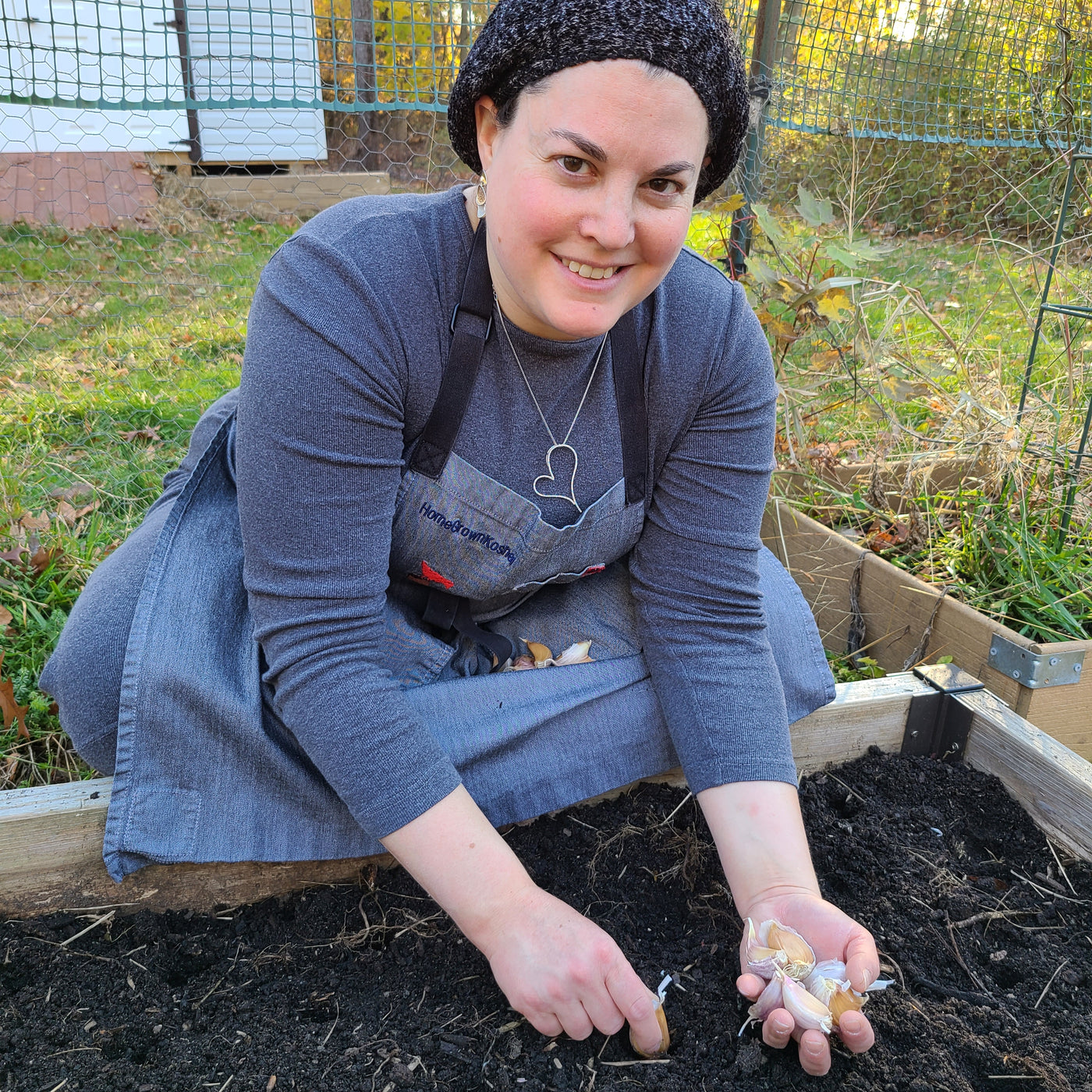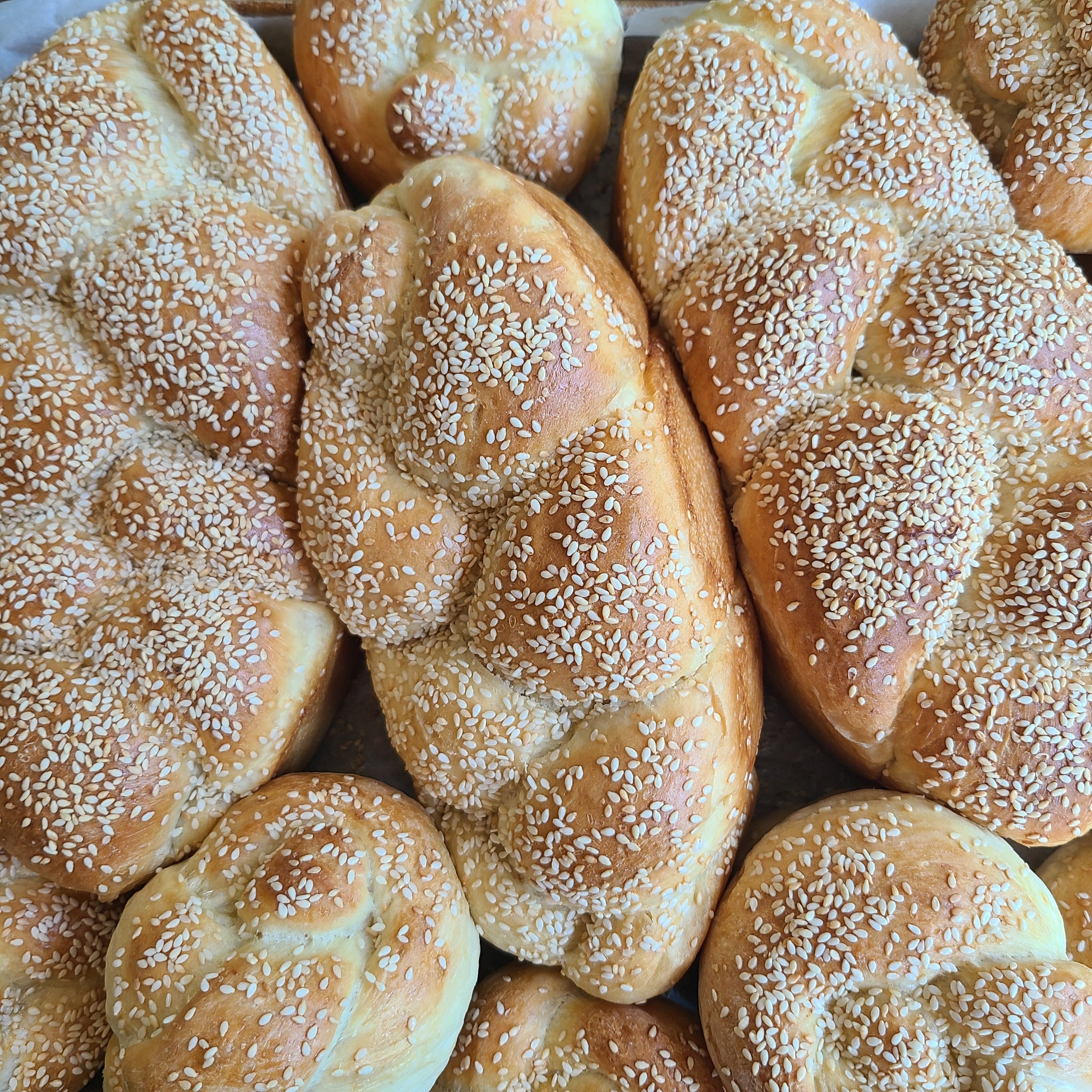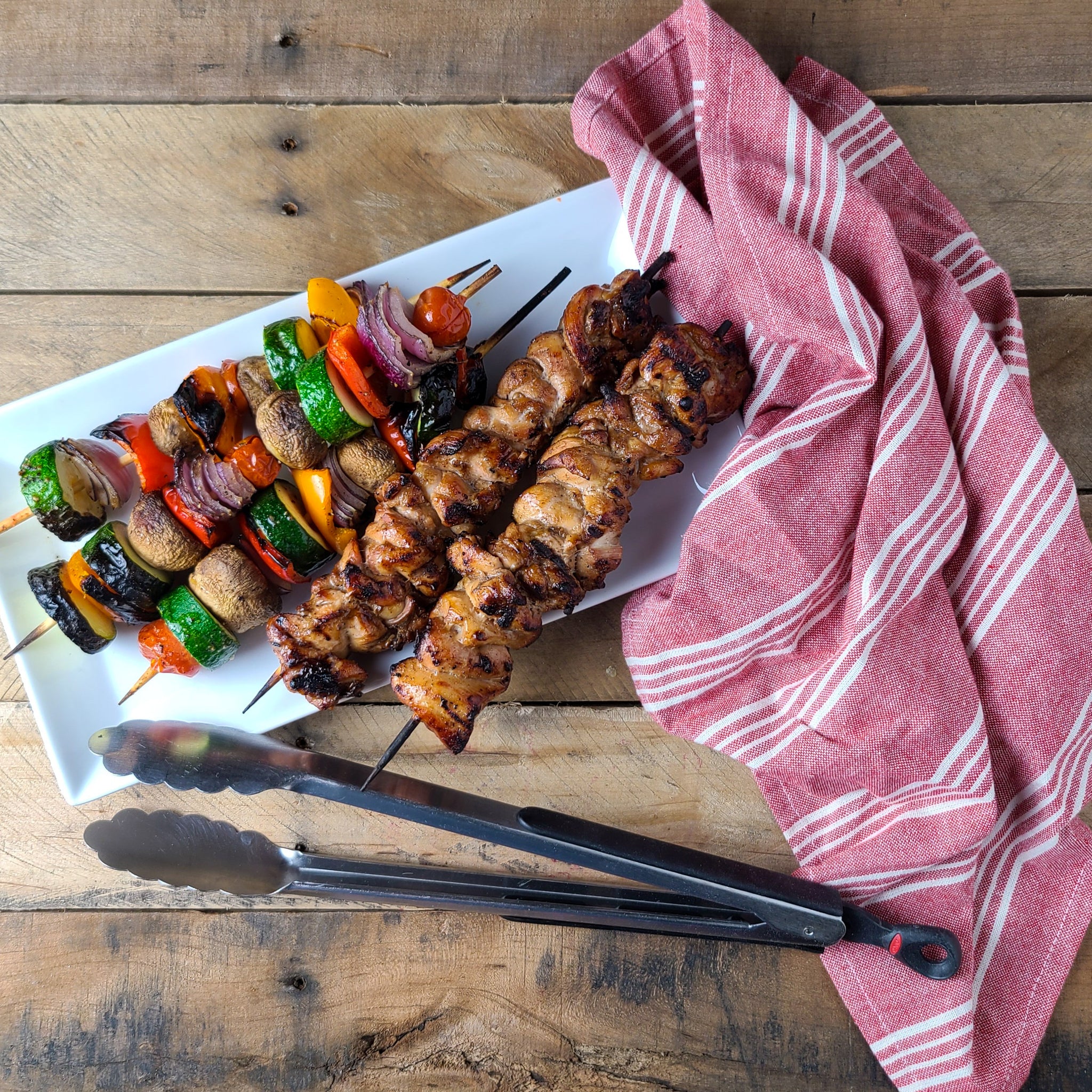
In the vegetable garden as in the kitchen, garlic is special. Just as it adds a unique flavor to your culinary creations its sowing and cultivation is unique among most other garden plants. Garlic is the first thing planted (or the last depending on how you look at it). In the fall, long after the rest of the garden has given up, and many months before you even think of planting tomatoes, or even peas, it's time to plant garlic.
In this article I will be discussing planting hardneck varieties of garlic because that's what I prefer to grow. It lasts well through the cold winter and I get two harvests out of the same plant. First, the tender and mild scapes are produced in the spring and later in the summer the bulbs or heads are ready to pick. Softneck garlic can be planted the same way, just be careful that your climate is mild enough for it to survive the winter.
What you need
Seed garlic is actually just the clove of a garlic head, planted with the papery skin still attached. Each clove will eventually sprout and produce an entire head of garlic by itself. I do not recommend planting garlic from the grocery store for two reasons. Firstly, it is often treated with something to prevent or minimize sprouting. Second, you do not know exactly what variety you are growing and if it is suited to your climate. At the end of this article I have listed several reputable sources for buying seed garlic. Once you grow your own you can save the largest cloves to replant each year if you'd like, though I usually end up buying new seed garlic each year so I can try new varieties (there are dozens if not hundreds!).You'll need a sunny area with fertile, well drained soil. Garlic can be grown in areas that are partially shady but your bulb growth will not be as vigorous. Full sun is best. I like to plant my garlic (as I do all my vegetables) in a raised bed. I use the sides of the raised beds that are above the level of the top of the soil to hold in the mulch (more about that in a minute). Never EVER step inside your raised beds. I can not stress this enough. Your soil is the most important part of your garden. Stepping inside your raised beds compacts your soil inhibiting root growth and disturbing the complex web of microbial activity and insects that live in your soil and contribute to soil health.
Do not plant your garlic in the same location as you did last year or where any other onion family crops were grown (leek, onion, shallots) It is also best to avoid planting it in a location where any cabbage family crops were just grown. Crop rotation is key to getting a good yield and keep away pests.
The last thing you'll need is some mulch to protect your garlic bulbs from the cold weather. My favorite thing to use is the flake type wood shavings sold as animal "bedding". You can purchase a large package at a pet store or at Tractor Supply (a large chain store similar to Home Depot or Lowes that sells farming supplies) you should be able to buy a huge bale for under $10. The other things you can use is straw. Make sure it is not treated with anything to inhibit weed growth as some straw sold as mulch can be (it will inhibit your garlic as well). Do NOT use hay as it contains weed seeds. You can also use fall leaves if you chop them first in a leaf shredder or by running them over with a lawn mower first.
That's all you need but if you have some compost you can place a layer of it over the soil after planting the garlic, before the shavings. This will fertilize your garlic plants when they come up in the spring.
Planting The Garlic
You'll want to plant your garlic about 4 weeks before the ground freezes. This can be anywhere from late September through November. I usually try to get mine in in late October but often end up planting it in the beginning of November and it does just fine.Gently loosen the top layer of soil with a garden fork. You don't want to till the soil deeply as this upsets your garden microbiome, but just gently aerate. The soil should fill your garden bed most of the way up but leave about 3"-4" of the sides of the bed above the top of the soil. This will help hold in the mulch.
Plant your garlic cloves with the peel on, pointy side up 2"-3" deep and 4"-6" apart. I find it easiest to poke the holes first with the correct spacing using a stick or my fingers and then plant all my garlic. Cover the garlic cloves with soil, gently patting it down. Be sure not to overly compress the soil. (Optional: Cover with a thin layer of compost) Then cover your beds with your mulch. If the soil is dry you can water now. If not you can just leave it alone until spring. It will get enough water for now from the winter rain and snow.
Spring and Summer
Your garlic starting to peek up through the mulch will be one of the first signs of spring. You may want to take off some of the mulch at that point if some of the garlic plants need help getting up through it. I usually remove about half of it and transfer it to my garden paths, leaving the other half to keep back the weeds in the garlic bed. At this point you'll want to water it if conditions are dry. You'll want to cut back on watering later in the season after removing the scapes as dryer conditions are better for bulb growth.Your hardneck garlic plants will send up a seed stalk in the late spring called a scape which you'll want to remove to encourage root growth. Garlic scapes have become a trendy seasonal food that can be quite expensive when sold in farmers markets and upscale food stores. You can grill or stir fry them or make a delicious garlic scape pesto.
In late summer when the bottom few leaves turn yellow your hardneck garlic is ready to harvest. Shake off the excess soil but do not wash it as that will cause rotting. Dry the whole plant it in the sun for a few days and then you can trim the tops of the plant off leaving only a few inches remaining above the bulb and store in a cool, dark well ventilated place.
Planting garlic in containers
Not everyone has a large yard with a garden bed ready to dedicate to growing garlic. Luckily you can grow garlic in a planter or "grow bag", which is a soft planter made from landscape fabric (there are many brands). Fill your container with potting mix until 3" below the top of the container and plant the garlic as per the instructions for planting in a garden bed. Fill the remaining space in your planter with mulch to protect your bulbs from the winter's cold. A benefit of using a planter is you can move it to a sunnier area if you find that the space you originally placed it in doesn't get enough space. You don't need a super deep container like you would need for something like tomatoes. 12"-18" deep should be adequate.
Growing Garlic in a Warm Climates
In places with mild winters, (USDA Zones 8 and above- see here to find your USDA zone) where the temperatures do not drop into the low 40s or below for at least 6 weeks you will need to plant softneck varieties of garlic as hardneck garlic needs the cold winter in order for the garlic bulb to develop. You will miss the scapes as softneck garlic does not produce them but can still grow delicious garlic. You should look specifically for softneck varieties suited to warm climates (the seed company should be able to provide that information). Your garlic will sprout earlier than in colder climates and you should expect to see slow growth throughout the winter. Don't worry if you have a cold snap as garlic is a hardy plant and can survive a few days of temperatures in the 40s or even the occasional frost.
Where to buy seed garlic
Keene Organics
Territorial Seed
Harris Seeds
As of November 8, 2020 Filaree Farm and Keene Organics still had seed garlic in stock
The other sources may be sold out for this year but are a good reference for the future
Order your garlic in the spring or summer and it will ship in the fall in time for planting!
Comments (1 Response)
Leave a comment (all fields required)
Comments will be approved before showing up.



09 March, 2021
R
I ordered the garlic. praying its not too late to stick them in the ground !